Contemporary heritage in Kyoto’s Higashiyama
The Hotel Higashiyama Kyoto Tokyu, A Pan Pacific Hotel, offers cool designer style in any season
SUMMER IN JAPAN IS VERY much an extreme sport. Kyoto is no exception. While it is a comfortably walkable city in more forgiving seasons, a visit in August is less about exploring and more about calculating the distance between one air-conditioned shop to another, and wondering if you can make it in a single leap.
The air-conditioning at The Hotel Higashiyama Kyoto Tokyu, A Pan Pacific Hotel, is wonderfully cold. We get that it’s not exactly one of the hotel’s most prized features, but – priorities. At that moment, those include air-conditioning and an order of shaved ice with “kyotantan” strawberries and sweet milk from its in-house tea salon, Sarei.
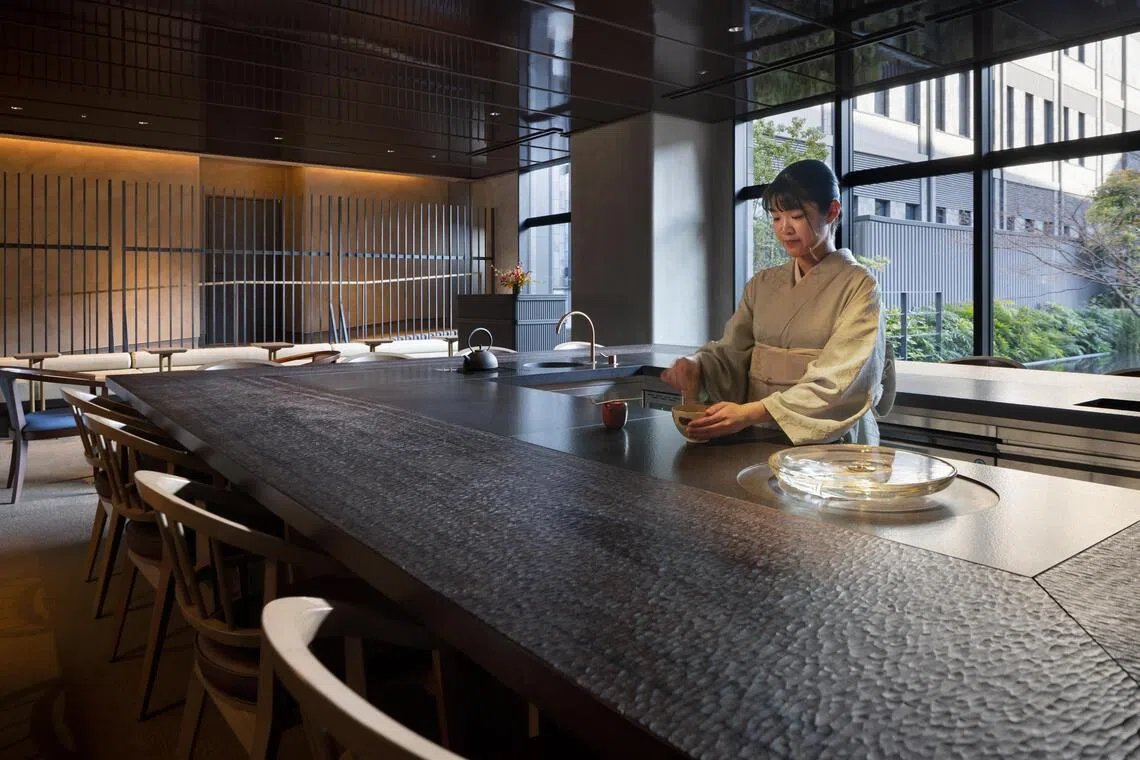
It is also here that we get our first taste of Kyoto’s famed matcha by Gion Tsujiri – purveyors of fine green tea from the Uji region since 1860. It’s served ceremonial-style as a welcome treat in Sarei’s chic counter setting – green tea macarons and sesame cookies are nibbled with sips of tea, while looking out to the calming view of the hotel’s beautifully landscaped courtyard.

It’s one of many little discoveries to be made as you slowly experience the hotel that could use a shorter name. It’s not a property that screams Japanese heritage – it just subtly celebrates it. You can tell from its exterior: an understated five-storey structure in slate grey with ever-so-slightly angled edges, blending so well into its nondescript surroundings that your taxi almost drives by without stopping.
The property sits in the prime Higashiyama district – the place to be when the lure of ancient tea houses, temples and geisha beckons. Although in this heat, it feels like only mad dogs and tourists in rented kimonos might be parading through the cobblestoned streets of Gion.
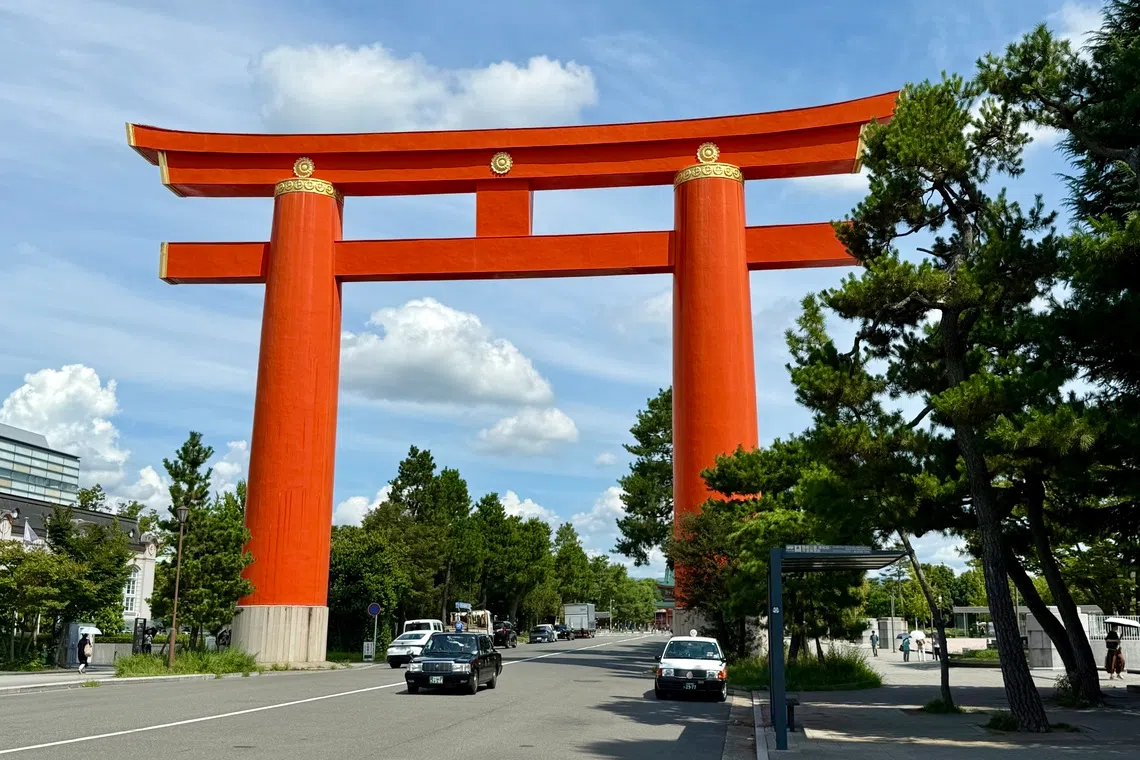
It is not so far as to be isolated in the foothills somewhere with ancient temples next door, nor so central that Takashimaya is a hop and skip away. It is a comfortable in-between – about a 20-minute taxi ride from Kyoto station, and a leisurely 1 to 2 km walk to the fringe of Kawaramachi-dori, the souvenir-heavy shopping street. A little bit more, and you’re strolling along the banks of Kamo River, exploring the cafes and shops that dot it. An activity best saved for cooler evenings.
Past and present
Your day can instead be spent immersing yourself gently into Kyoto culture at The Hotel Higashiyama, itself a heritage spot as the former site of Awata Elementary School, which taught students for more than a hundred years before closing down in 2011.

There is a reminder of its scholastic past in the lobby, where an intricate textile panel stretches 15 m across a wall by the reception desk. Contemporary artist Aiko Tezuka used traditional nishijin-ori techniques to weave patterns and crests inspired by the school, recreating maps and drawings for a whimsical, colourful collage.
Tezuka’s work also hangs as an installation from the lobby level to the basement restaurant – the fabric screens depicting scenes of traditional Japanese life and drawings of the old school.

The hotel’s designers incorporate a sense of time and place in every corner. Display cases filled with delicate Kyoto Awata-yaki ceramics will have you hunting for the price tags (there are none). The well-curated gift shop showcases a selection of contemporary craft by local artisans (with price tags).
Wander through the corridors on the different floors and follow the flow of the Shirakawa River woven into the carpets – a meandering path. Meanwhile, the rooms are a modern interpretation of ryokan hospitality. Think sliding screen doors, textured walls, square onsen-type bathtubs, bamboo tea boxes, lantern-like lamps (including an old-fashioned one hanging outside your door with your room number on it) and, yes, pyjamas.
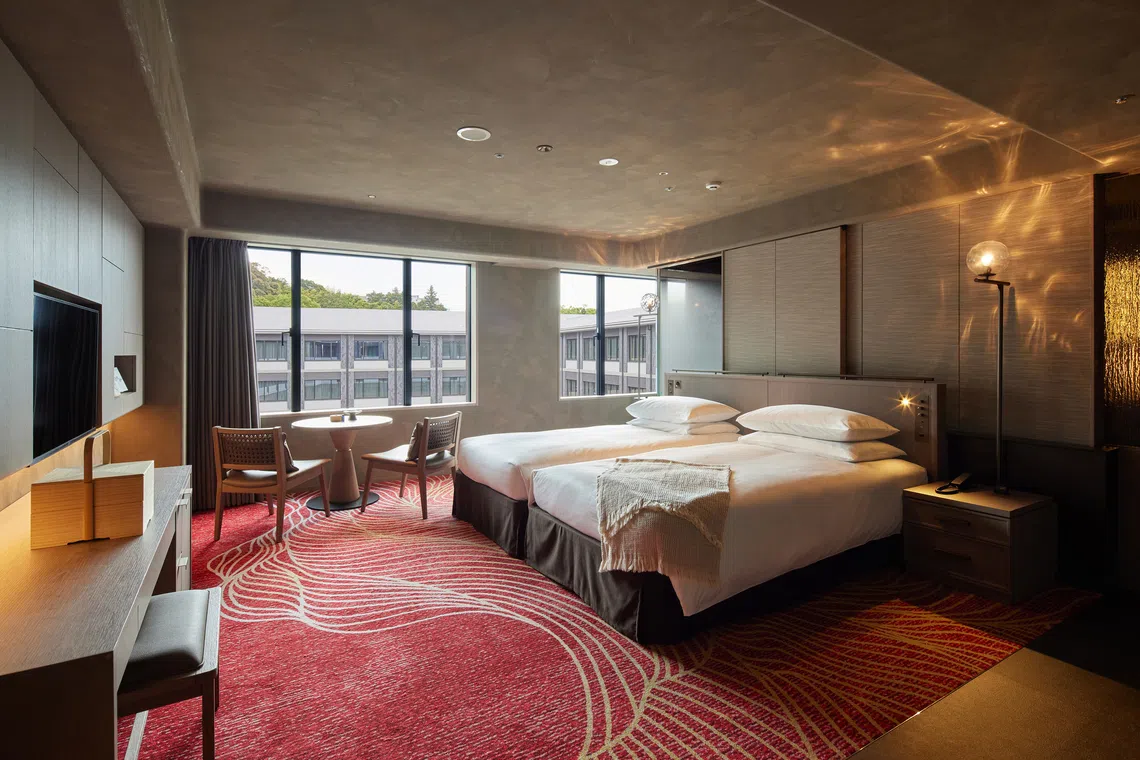
Hands-on experiences and sightseeing
The in-house restaurant Nananoichi doesn’t just serve a curated Japanese and Western breakfast (including mini pots of shabu-shabu) and Japanese-French cuisine at lunch and dinner, it also conducts onigiri workshops as one of the many cultural experiences the hotel offers.
Apart from moulding your own nori-wrapped snacks with premium Kyoto rice and fillings from salted kelp to salmon, there are off-site activities too. Take your pick from traditional woodblock printing, painting your own fan, or sitting it out on a rickshaw tour of Higashiyama’s best scenic spots.
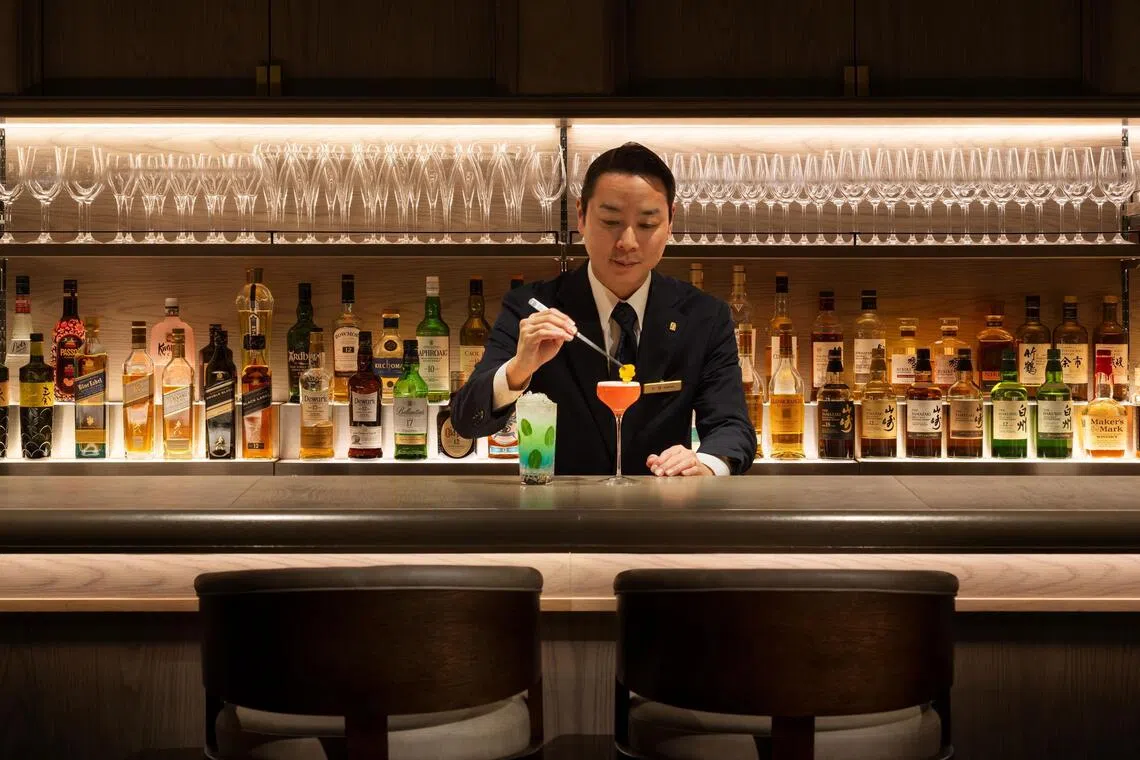
Alternatively, there’s the local neighbourhood to explore, with quaint old-fashioned shops just around the hotel, where you might find a little chocolate boutique or tiny craft and design shops.
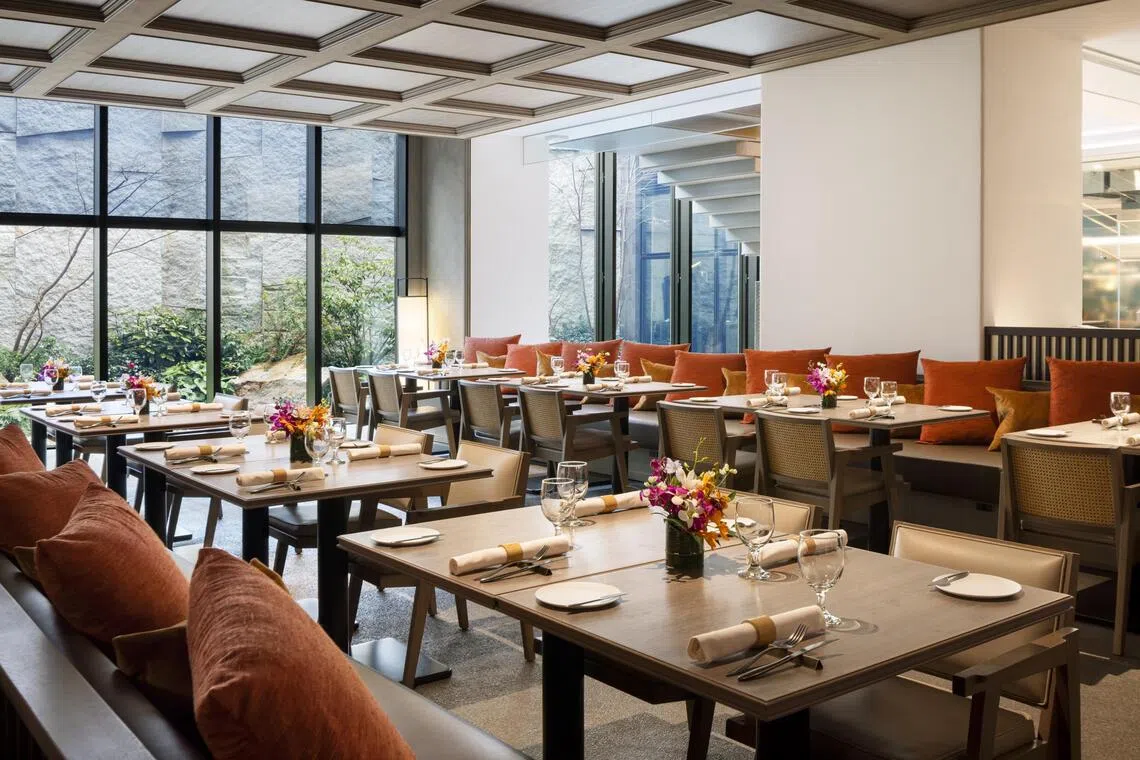
Depending on the direction that your room faces, you might see an imposing red torii in the distance – a giant gate that leads to the grand Heian shrine. It’s not a long walk, but better still if general manager Terue Ogawara is on hand to give you a lift in her car, with a few other pit stops along the way.
That would include the National Museum of Modern Art, and the Philosopher’s Path – a bucolic stroll for contemplative thought. Ogawara – a true-blue Kyotoite – adds her own insider input for good measure.
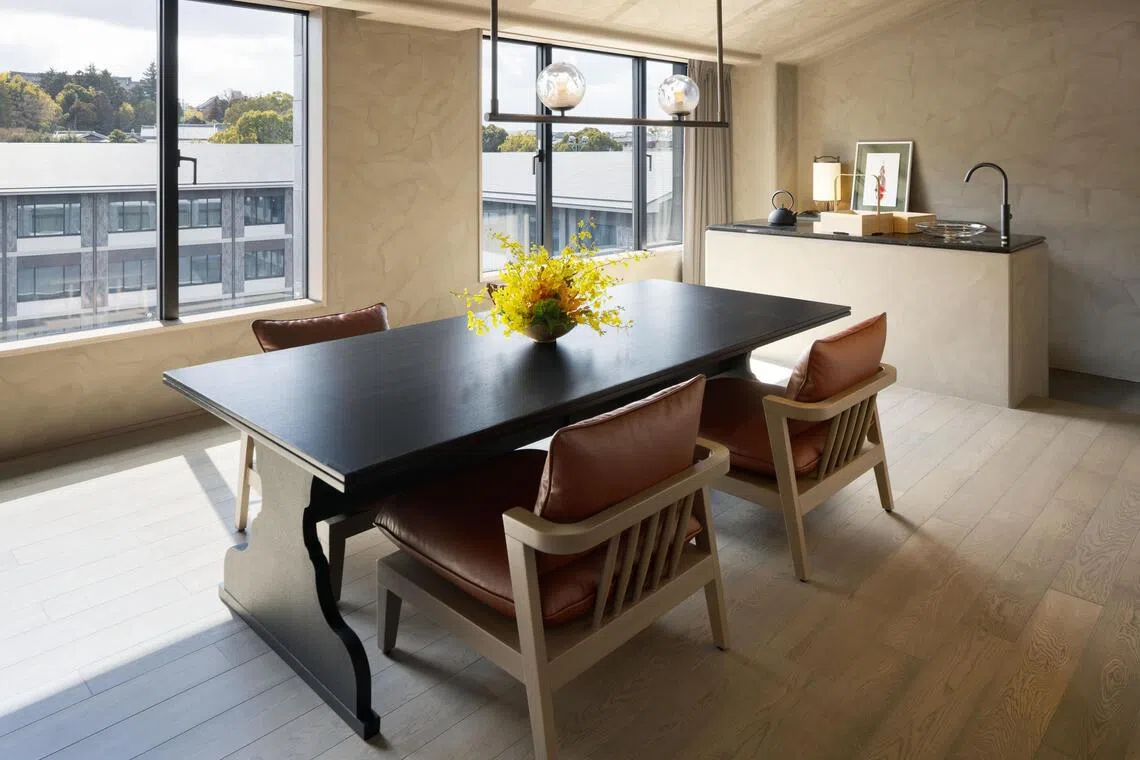
Shopping and dining
The onslaught of tourists has sadly turned much of Kyoto into a souvenir trap, so good luck trying to find anything unique in the random shops of Kawaramachi-dori, Teramachi and even Nishiki market. That last one was once a happy hunting ground for local shoppers looking for dinner ingredients; now it’s just commercialised and tuned to those wanting instant-gratification snacks and knick-knacks.
But if you’re prepared to go deeper, especially on the dining front, there are plenty of authentic eateries to look out for.

Tokuha Motonari is a 15-minute taxi ride from The Hotel Higashiyama, and is helmed by Shinya Matsumoto, the former head chef of the acclaimed Wakuden who now serves one-Michelin-starred irori-style (grilling over a hearth) cooking at his own home: a simple, traditional house in a residential neighbourhood.
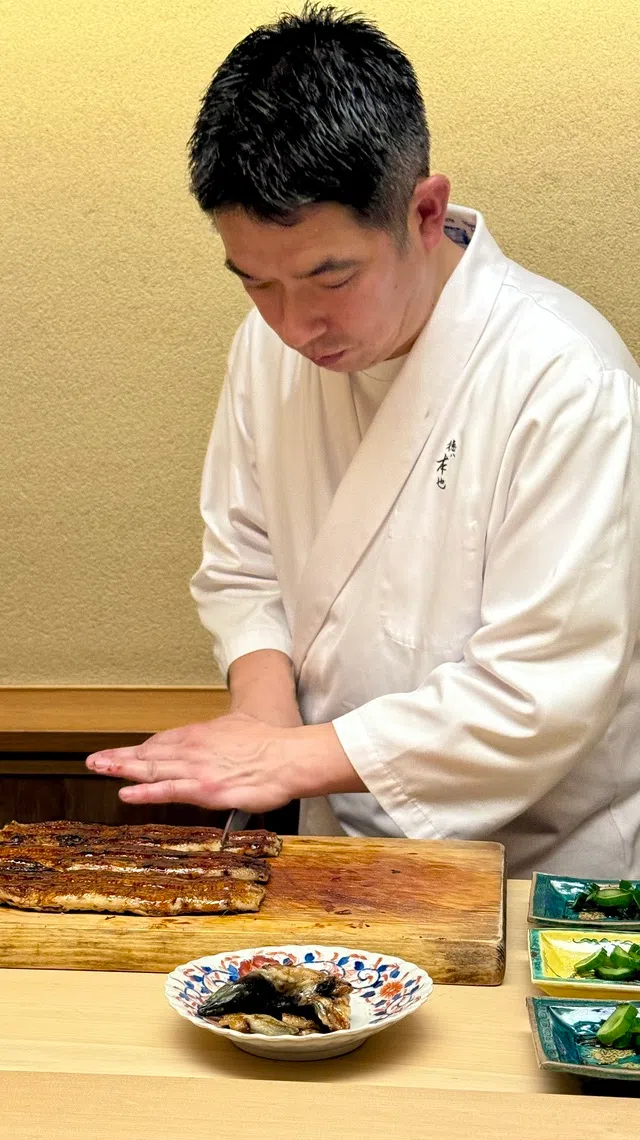
This is where he prepares a full line-up of seasonal ingredients highlighted by ayu – river fish native to Kyoto – speared and grilled over charcoal, served with a traditional takezu or herb sauce, and eaten whole from head to tail. Also impressive is wagyu marinated in miso, which he scrapes off and grills, paired with melting soft fresh figs.
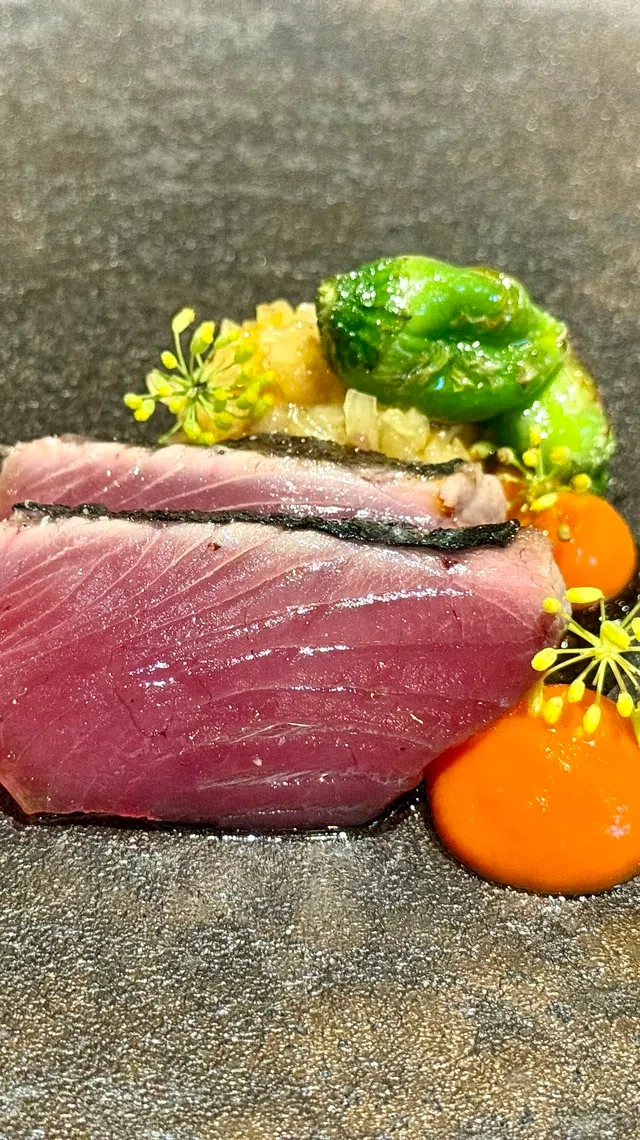
For a taste of Japanese-accented Italian, there is the one-starred Cenci, where chef Ken Sakamoto cooks with his heart and passion for home-grown ingredients. Also a rising star in the Asia’s 50 Best Restaurants list, Sakamoto impresses with understated yet intense flavours, playing with textures and layers.

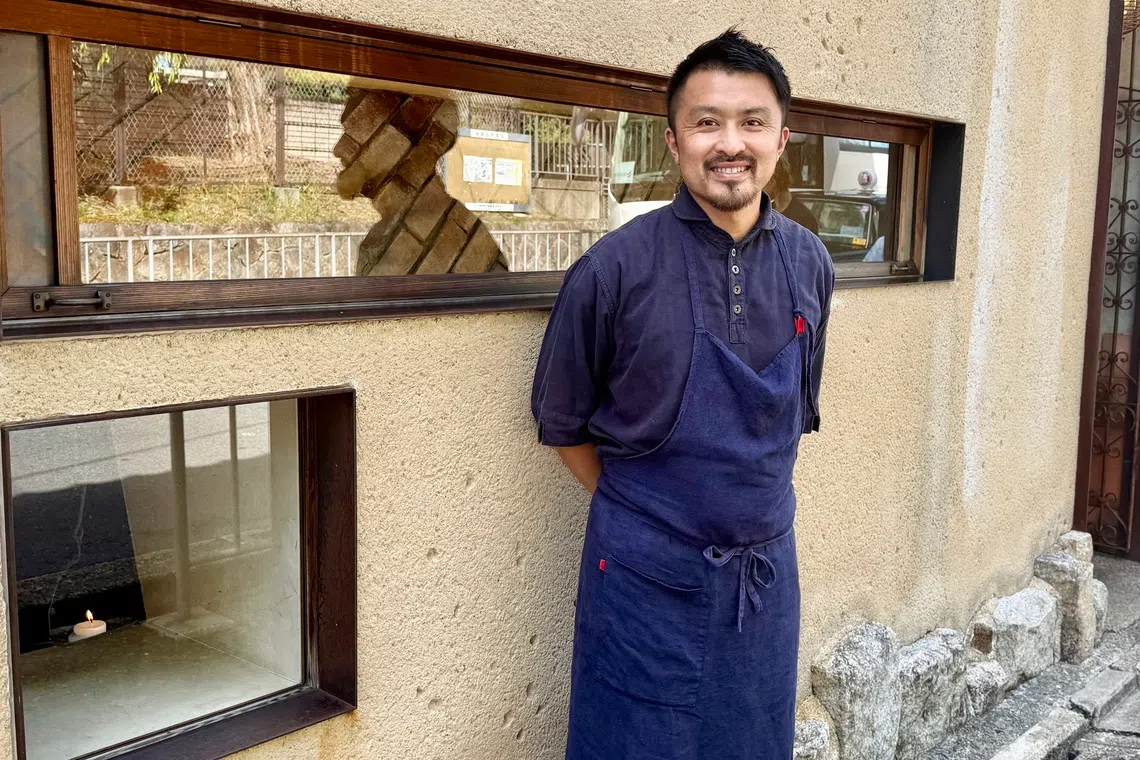
Named after the Italian sweet fried dough, you might start off with a deep-fried, savoury-fried cenci topped with Japanese prosciutto, peach and ricotta for a refreshing bite. Then you move on to a risotto of Japanese carnaroli rice cooked into a creamy texture without any dairy, mixed with octopus, tomatoes and celery. Steamed and fried courgette layered with tofu cream and roasted almonds is all about textures and balance.
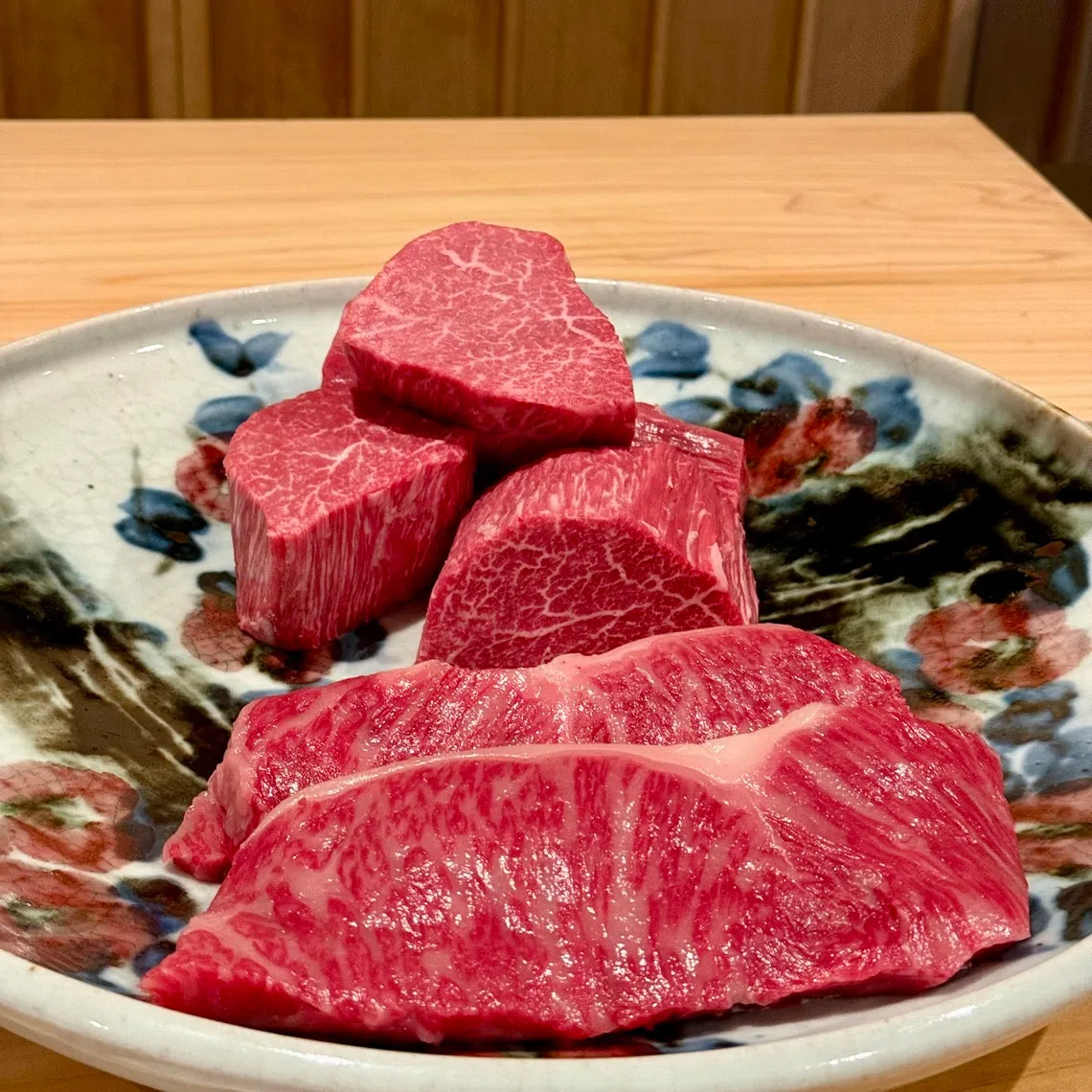
The piece de resistance, however, would be at Nikunotakumi Miyoshi, a full-blown wagyu-focused restaurant that serves only the best-quality Matsusaka and Kobe beef in various ways. Be prepared to pay a pretty penny – upwards of S$500 a head – but you’re rewarded with beautifully sweet delicacies such as tongue sashimi served with ponzu and kombu butter, velvety beef sashimi served on its own, and beef prosciutto layered over sweet melon as a palate cleanser.
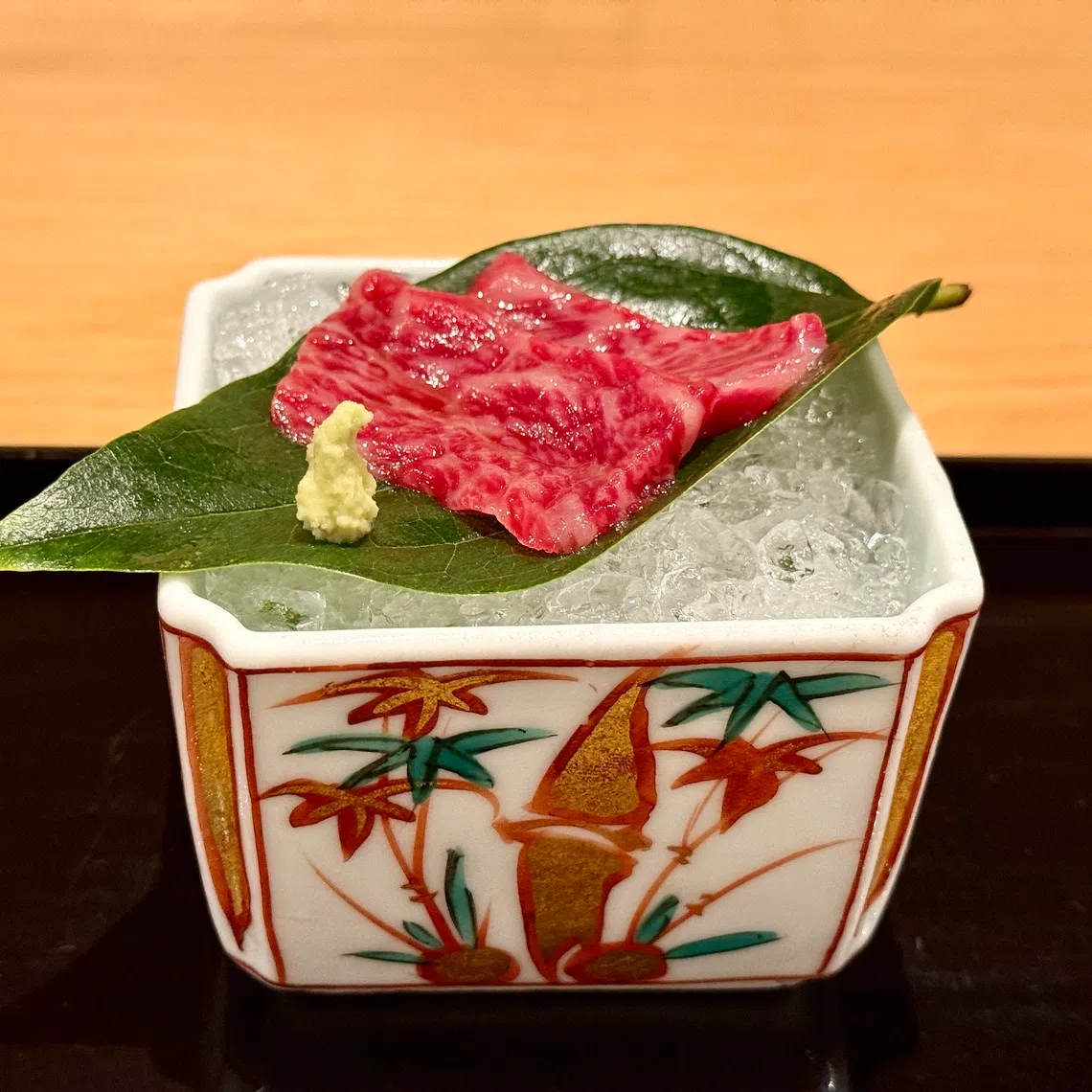
Matsusaka beef shabu-shabu and thick, grilled chateaubriand steak cap off a show-stopping meal.
It adds a fitting touch to your visit to Kyoto. It may have been a hot summer stay, but the cool heritage of The Hotel Higashiyama and the city’s top-level dining make it worth a visit any time of the year.
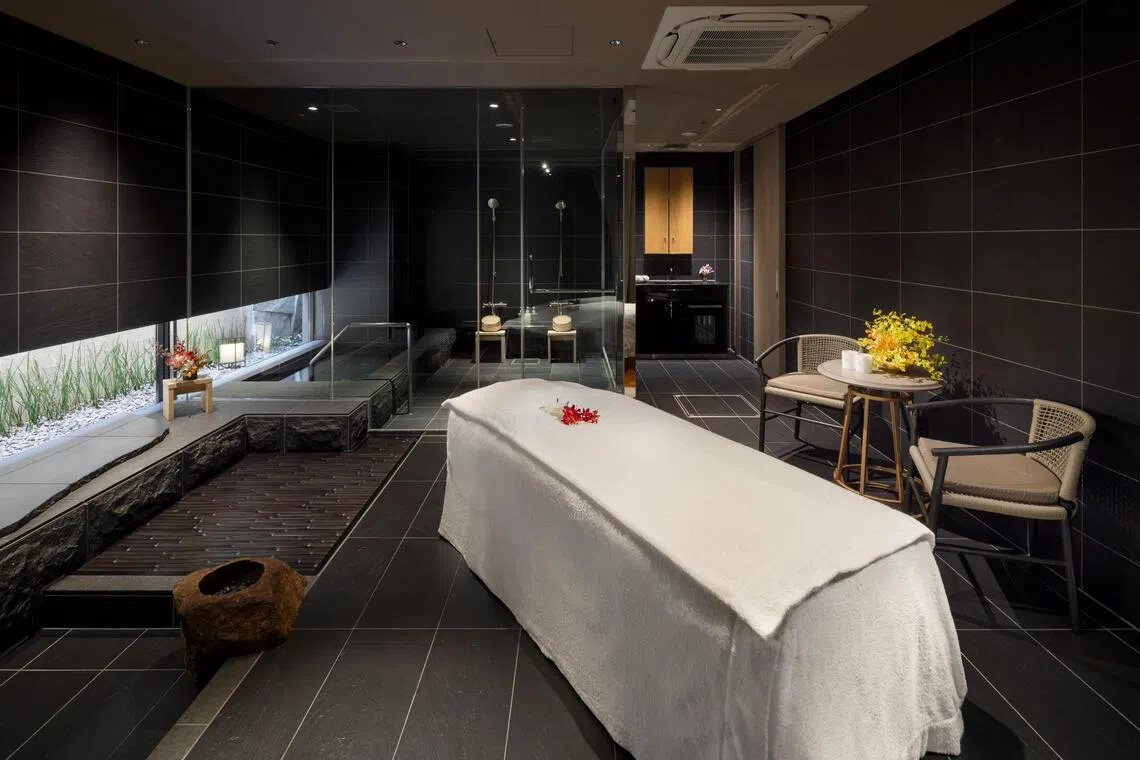
Decoding Asia newsletter: your guide to navigating Asia in a new global order. Sign up here to get Decoding Asia newsletter. Delivered to your inbox. Free.
Copyright SPH Media. All rights reserved.






